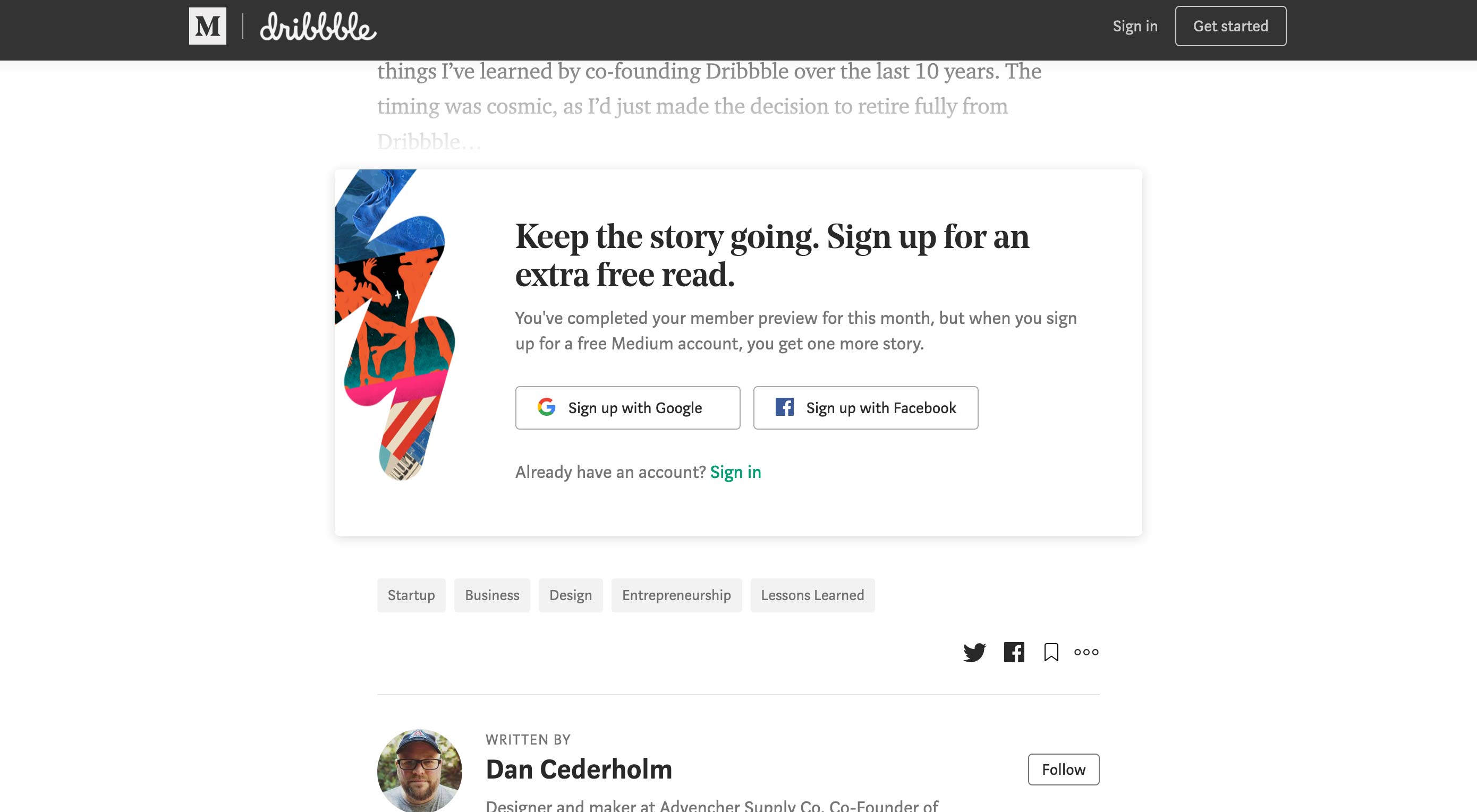Is Medium in a Downward Spiral?
Thinking about doing some blogging for your business? That’s a good idea. Content marketing is one of the best ways to establish credibility and authority, regardless of what kind of business you run.
So, how do you decide where to publish your content?
Medium was the platform of choice for some time. Everyone from the hobbyist blogger to the major corporation was publishing content there. Considering it was built specifically as a blogging platform and it costs absolutely nothing to use, why wouldn’t people continue to flock to it as content creators, and readers?
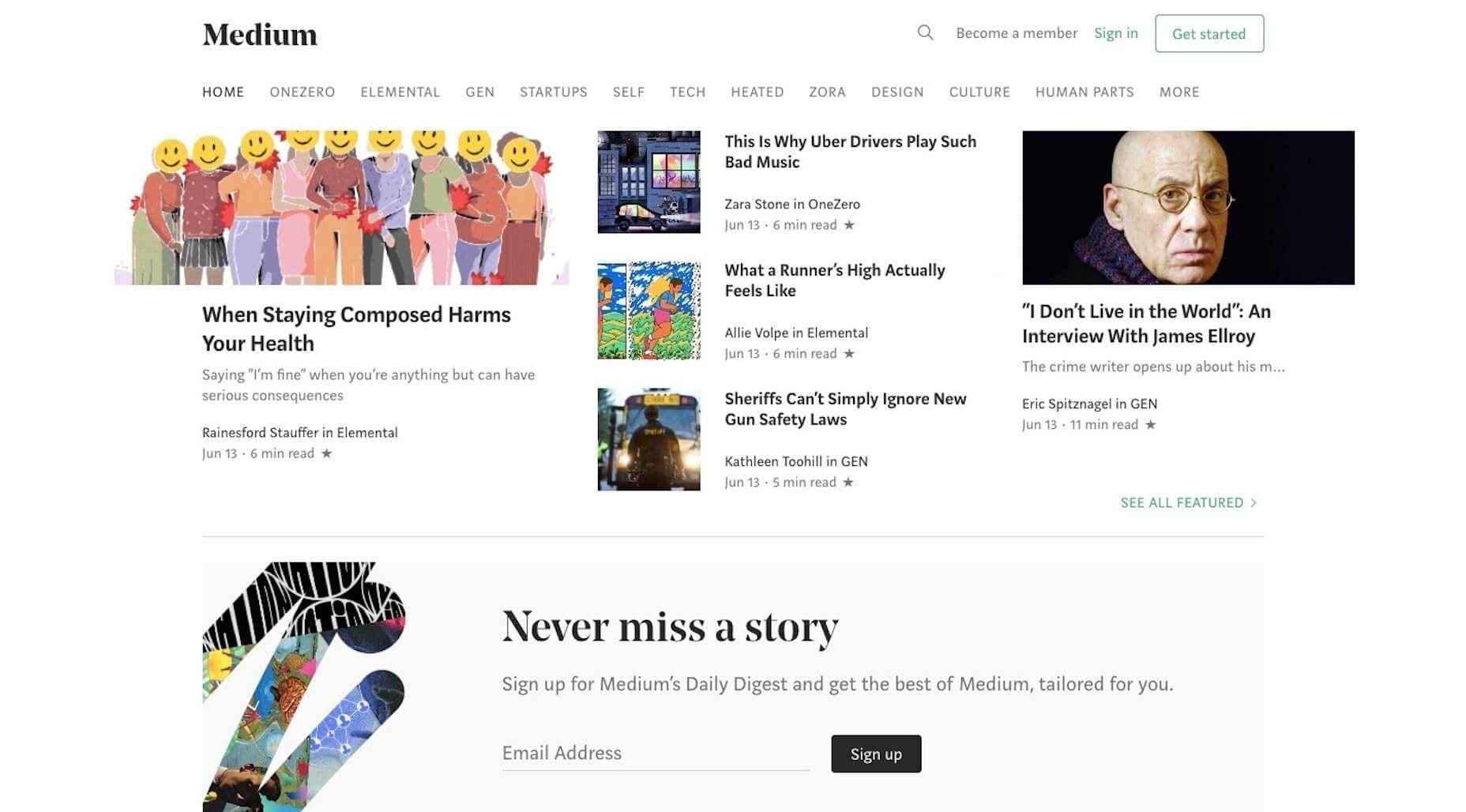
Despite the seeming attractiveness of the platform, it has its flaws — more and more of which are becoming apparent as well-known writers abandon the platform. So, before you go deciding to put all your blogging eggs into Medium’s basket, let’s take a look at the platform and all the reasons why it’s a bad idea for you to publish content there.
The Problem with Medium as a Professional Blogging Platform
I began blogging with Blogger, another publishing tool created by the co-founder of Medium, way back in the day. At the time, it was perfect. It was easy to use and enabled me to get my thoughts on the page and out to readers in no time at all.
That’s because there was nothing to think about. No hosting to purchase. No performance to maintain. No theme to configure. Just type and “Publish”. It was incredibly rudimentary, but it served its purpose for a hobbyist blogger.
Many years later, I discovered Medium and was intrigued. It was like a better-looking, but still easy-to-use Blogger.
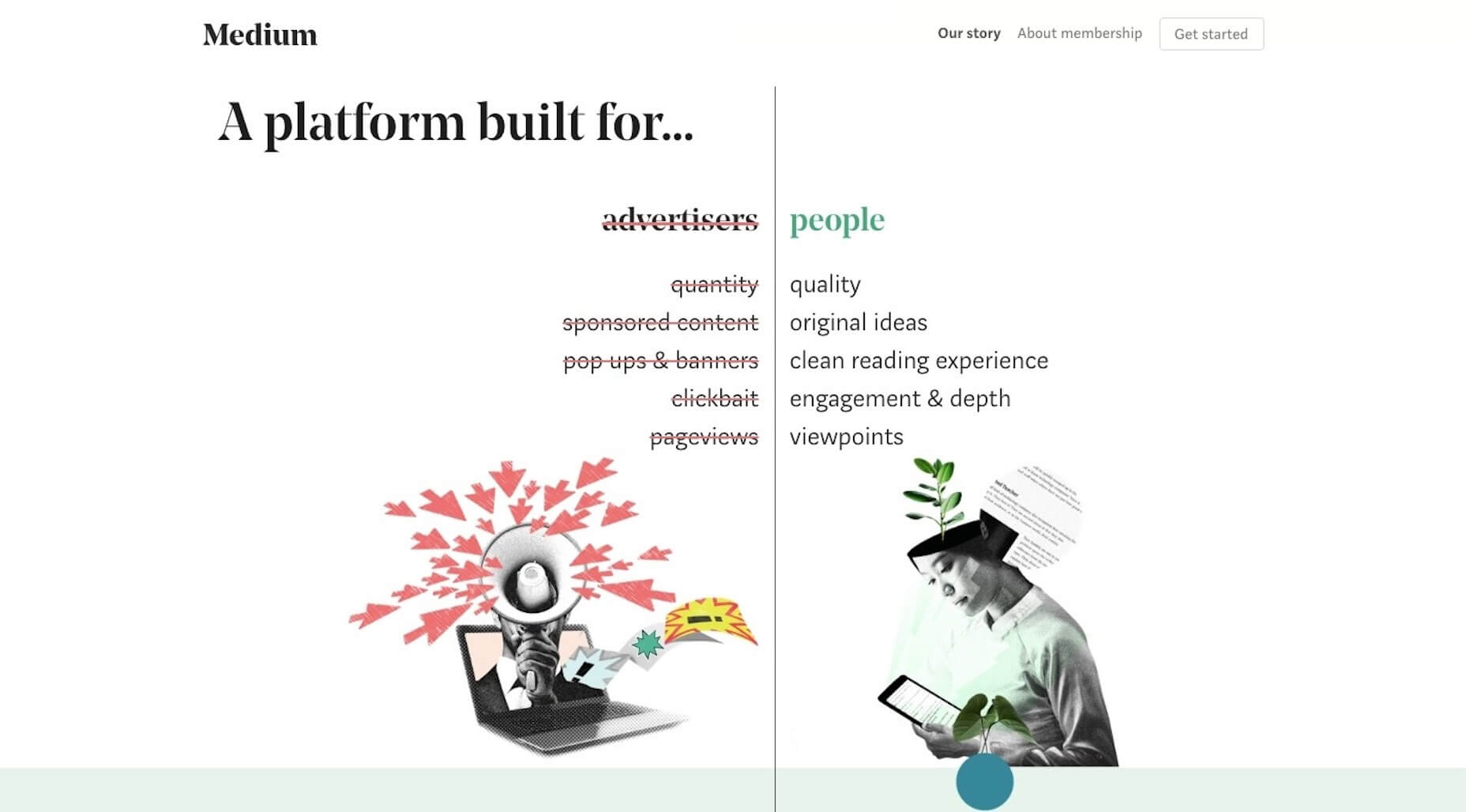
I also really liked that it provided a time-to-read estimate. It seemed like a much more convenient and friendly place to get content from.
But that was 2012.
We’ve had plenty of time to give Medium and its ever-growing list of writers a chance to become the premier blogging platform it set out to be.
While I’d say it’s been helpful in giving some people a platform to speak from, this is not the place for professionals in any field — especially web design — to share their content.
Here’s what you need to know:
“Subscribe to Medium” Is the Primary CTA
Even if the content you’re writing isn’t meant to directly sell (which it really shouldn’t), there’s always going to be a call-to-action in the end:
- Have questions? Drop us a line.
- Experienced something similar? Share in the comments.
- Want more content like this? Subscribe now.
But that’s not what happens on Medium. In fact, the primary CTA is all about Medium — and it takes up a good chunk of the reading experience.
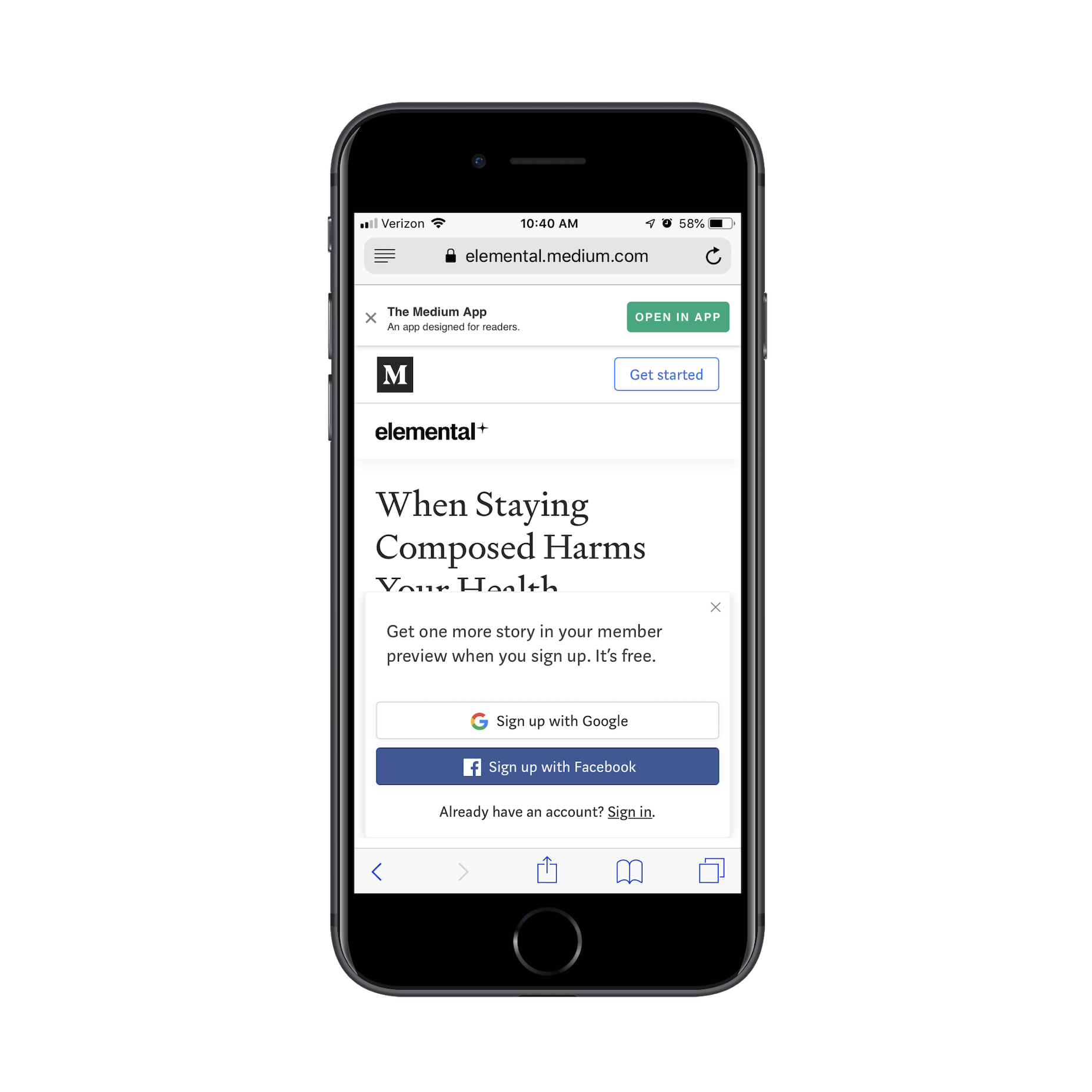
The “subscribe” sticky banners are almost always present on Medium. Put them on mobile, and it gets even worse.
If you’re hoping to keep readers’ focus on your content, good luck. They’ll have to be incredibly patient and strong-willed to ignore the constant barrage of Medium’s self-promotional pop-ups.
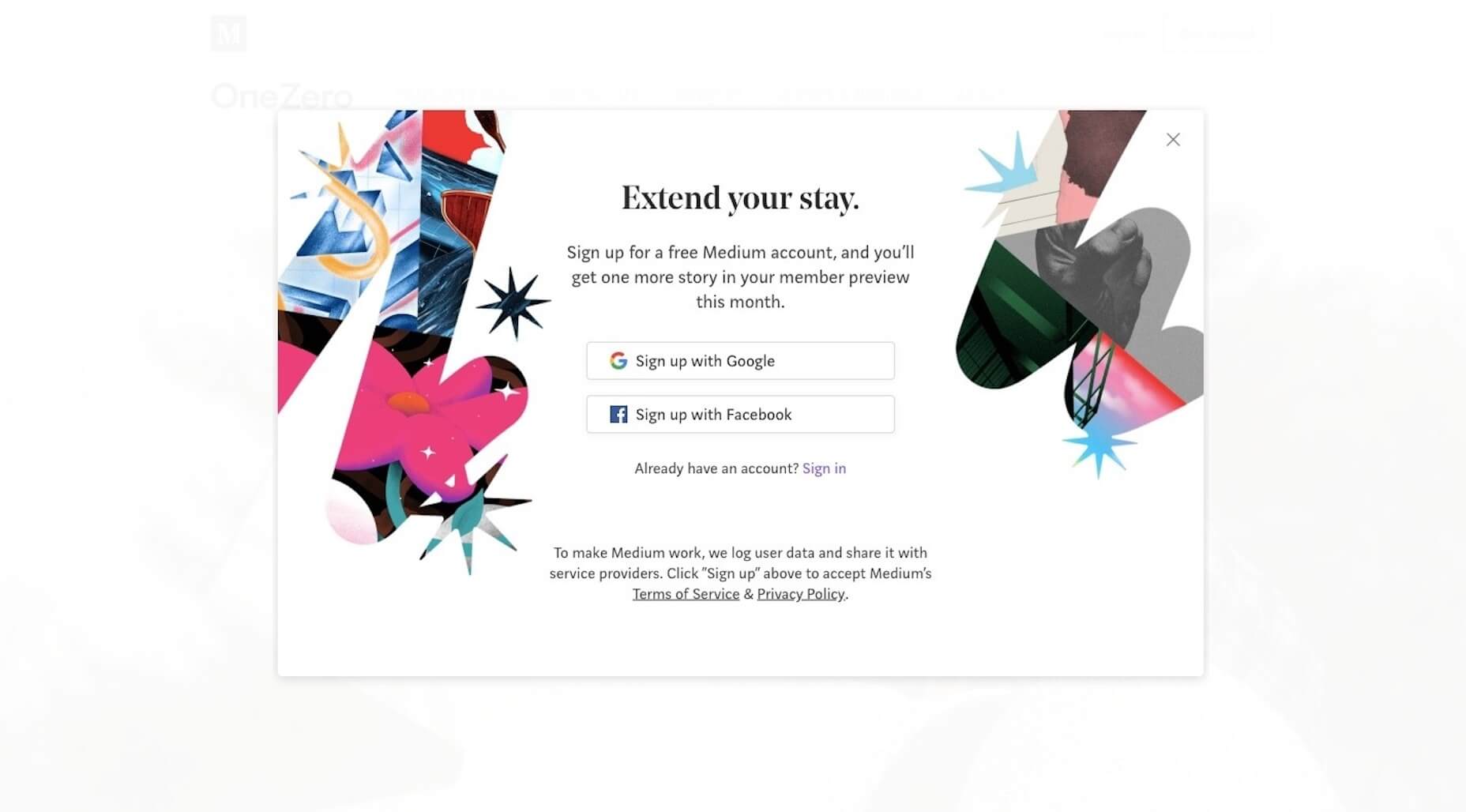
Perhaps the worst thing about these calls-to-action is that they don’t stop, even if the reader dismisses them. It makes for a terribly distracting experience.
Your Brand Does Not Matter
Why do we do content marketing in the first place? To educate readers, of course. But to what end? We want them to see us for the authority that we are. By providing them with valuable insights they can’t get on their own, we demonstrate what a great asset we would be.
But how are you supposed to do that when most traces of your brand are gone?
It’s not that Medium doesn’t give you an opportunity to share a bio for yourself or to enable readers to follow you.
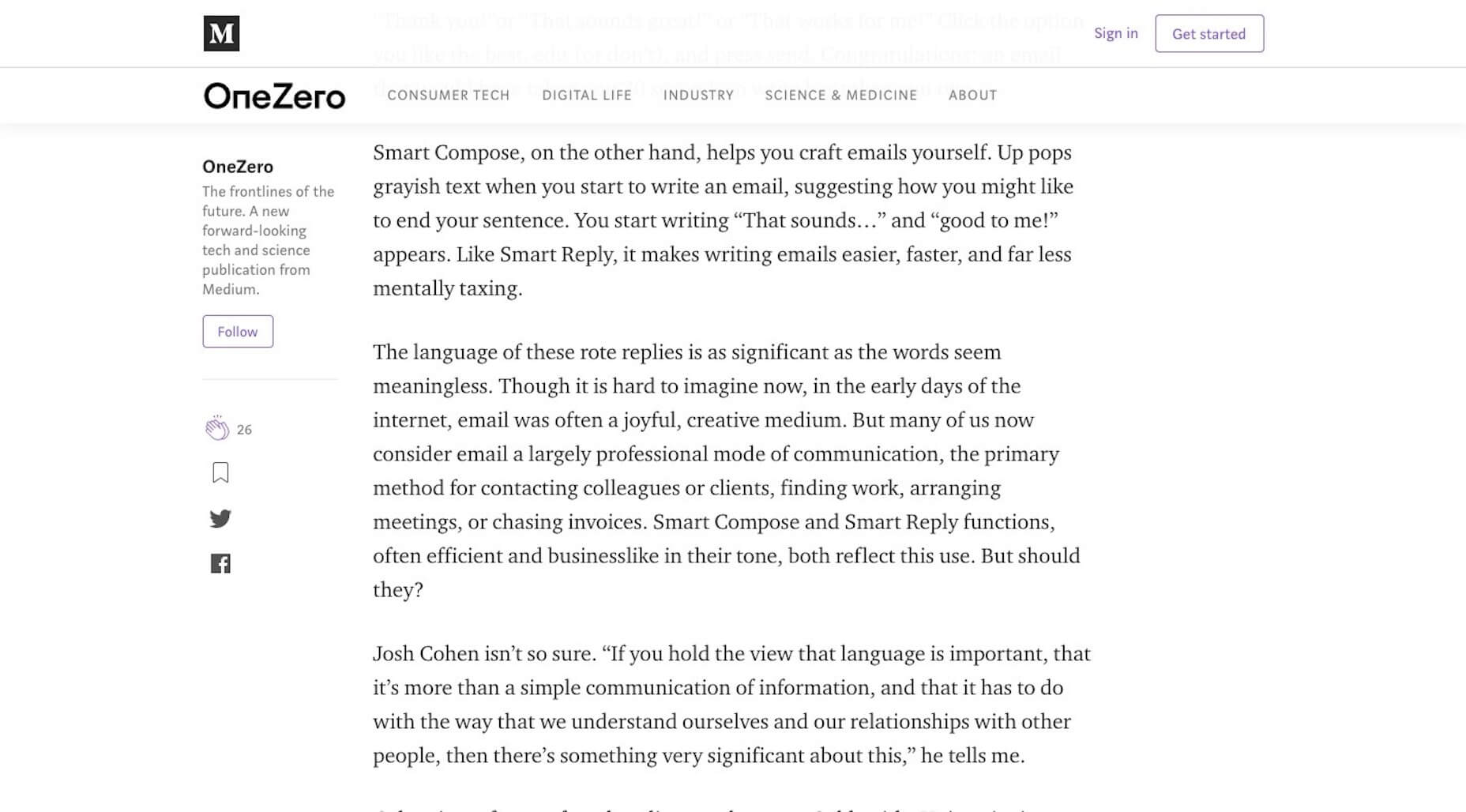
The problem is with the way Medium positions your content on the site.
Baremetrics moved their content back to their website for that very reason:
I realized Medium is really great about surfacing content, but it removes the face of it. It neutralizes all content to basically be author-agnostic. It’s like Walmart or Amazon in that you can buy from thousands of different brands, but you rarely actually know what brand you’re buying…you just know ‘I got it from Amazon.’
If your goal is simply to write and to be heard, then, by all means, use Medium. However, if your goal is to give authority to your brand, forget about it. Not only will Medium drown out your brand, but it’ll do nothing to help you build a presence in search engines.
Content Is Too Simplistic
Spend enough time on Medium and you’ll quickly realize the content is mostly in the form of very basic thought pieces. When you look at its editor, you can see why that is:
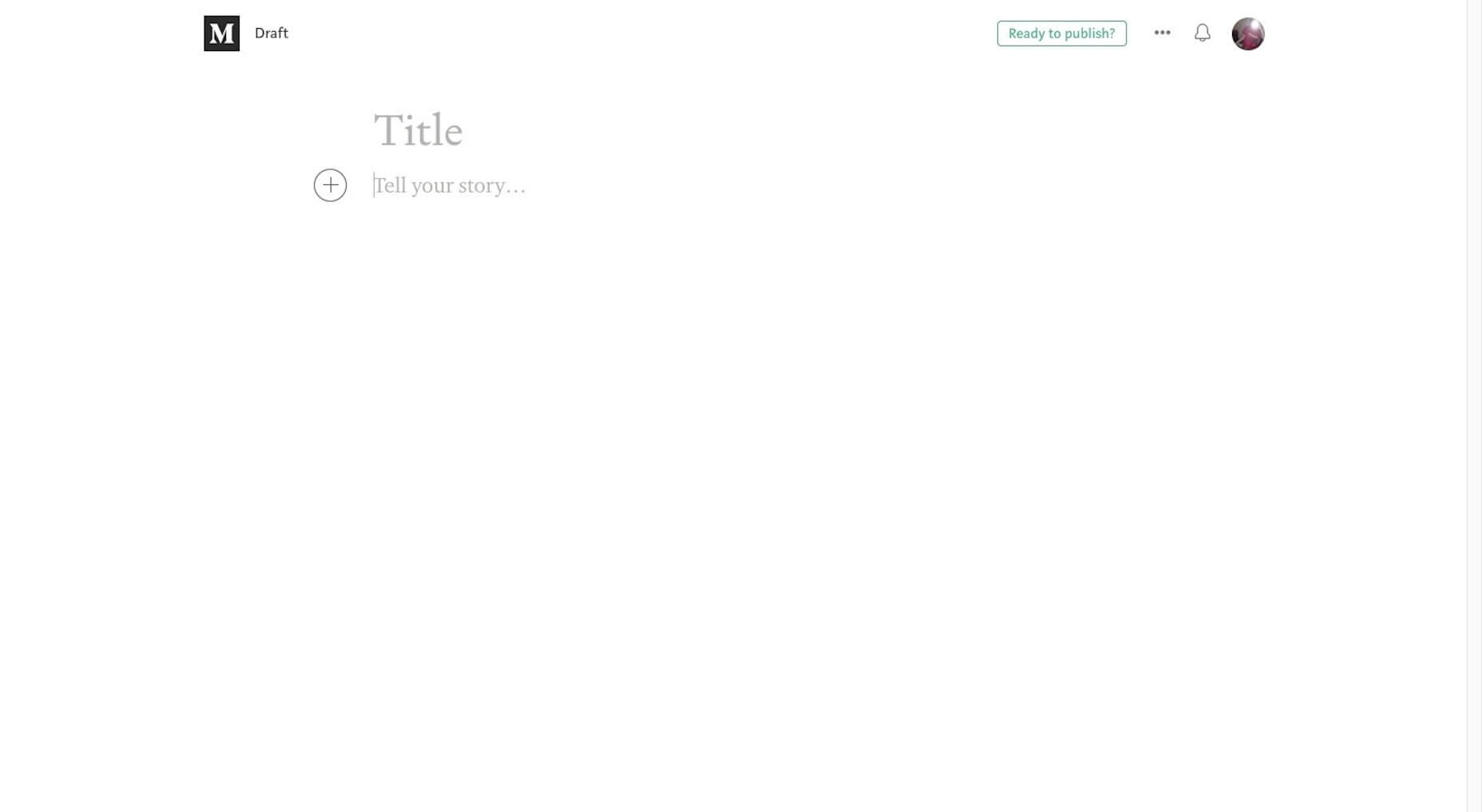
I know that for my own content, that would never fly.
I write about web design and development, which means a lot of my content includes relevant screenshots of what I’m talking about along with code snippet suggestions. I also write in a way that makes my content easy to scan on the page (e.g. header tags, bulleted lists, quote callouts) and easy to index for search (e.g. metadata, keyword density, schema markup).
I suspect the same would be true for someone like yourself. If you’re in the business of designing or developing solutions for the web, your content should be a reflection of that. And the capabilities provided by Medium just won’t allow for that:
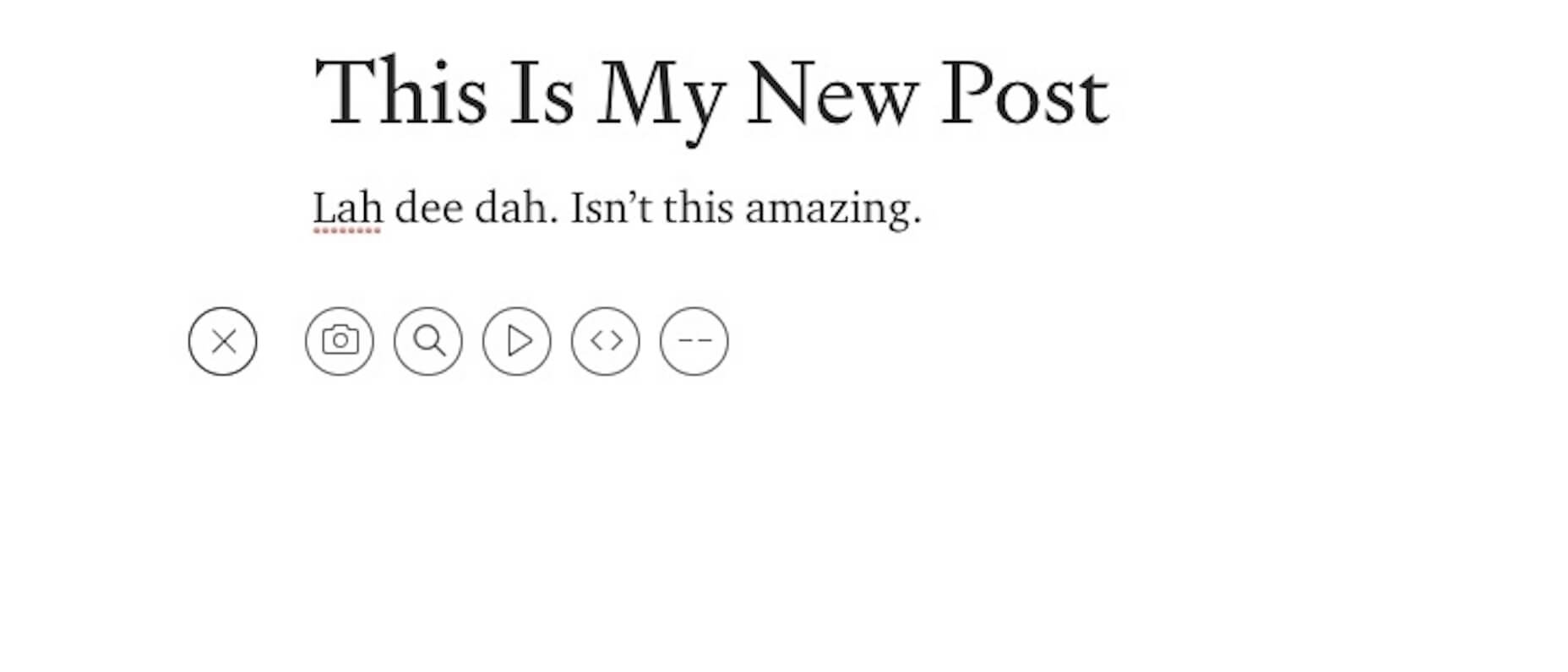
You can:
- Compose text;
- Apply basic styling (e.g. bold, italics, alignment);
- Upload images;
- Embed videos;
- Embed social media feeds and other widgets;
- Add a separator.
That’s it. Even with these options, your controls are incredibly limited. For example, this is what a basic image upload looks like:
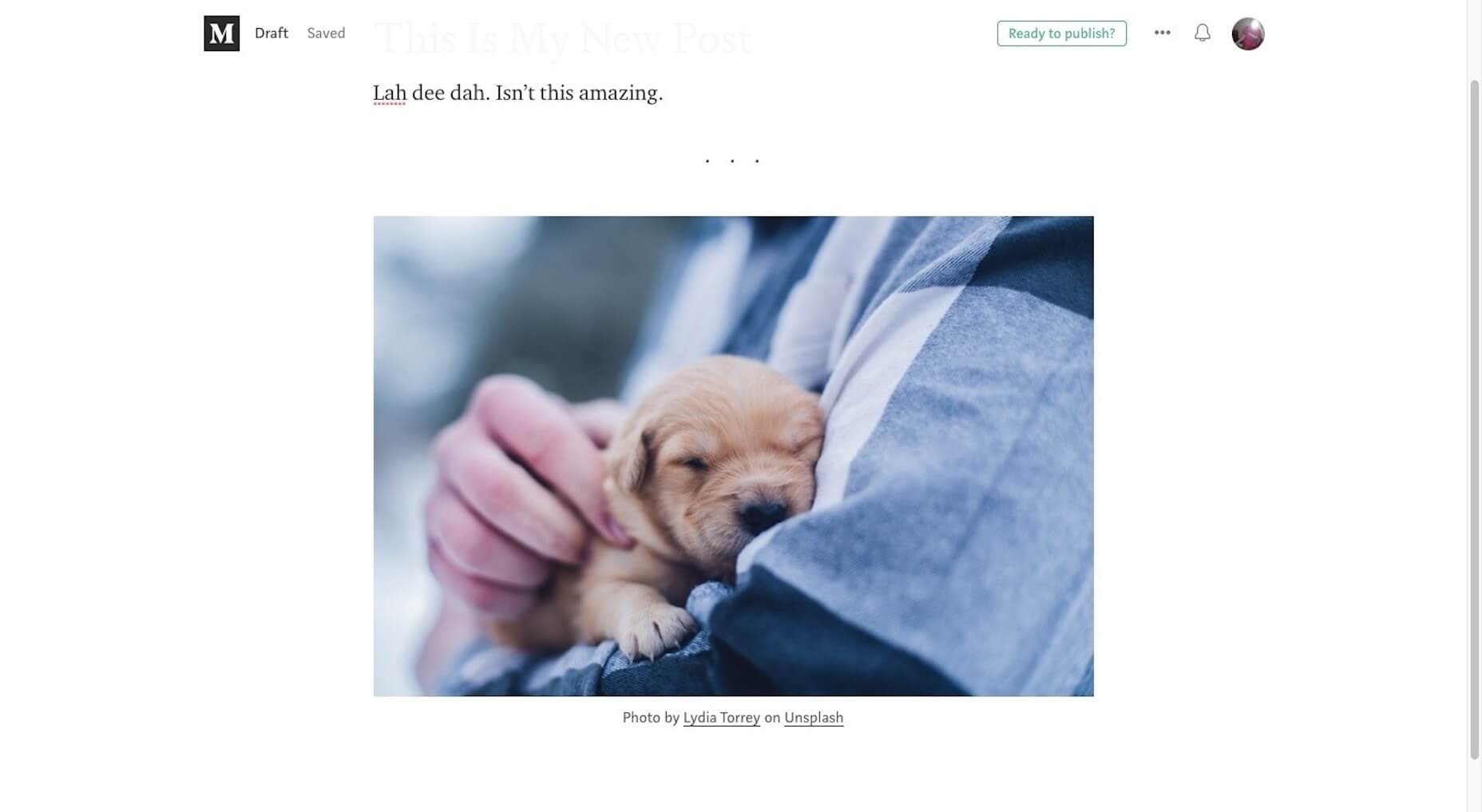
It’s not terrible. But what happens when you want to turn it into a full-page banner image at the top of the post or as a section break?
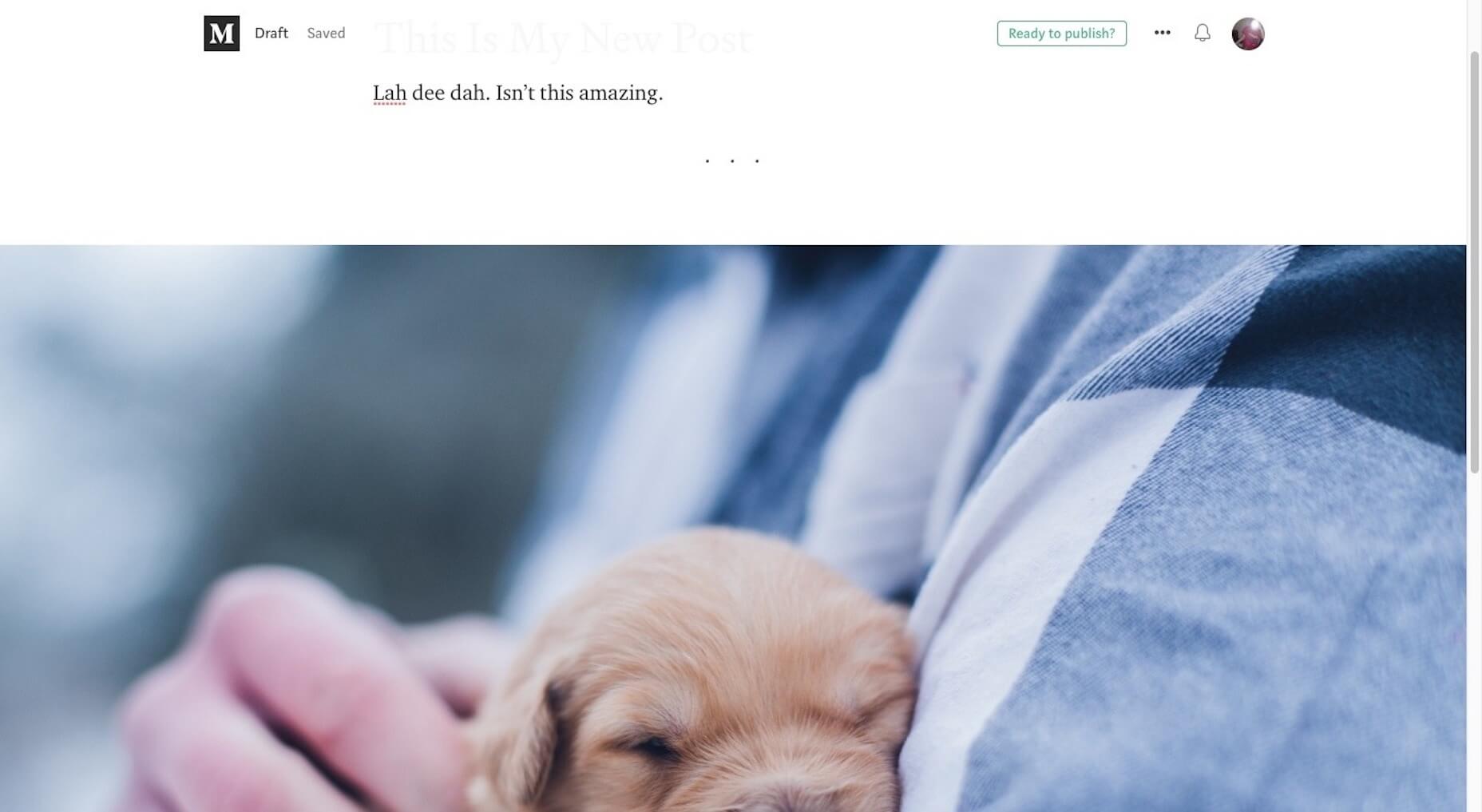
It’s way too big and, unfortunately, you have absolutely no control over the element.
Then, there’s this issue with video:
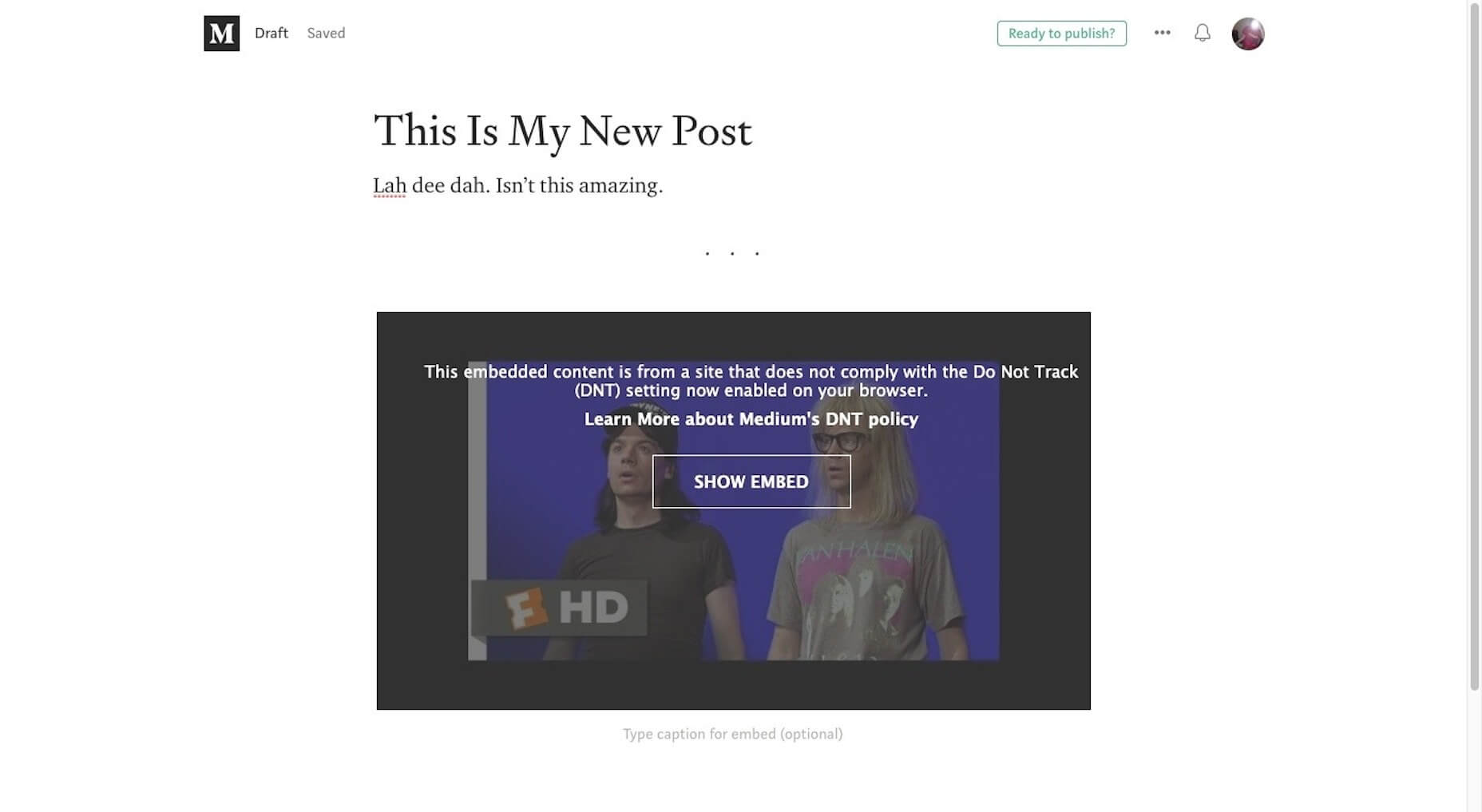
For starters, Medium never asked my permission about tracking and cookies, which is a violation of GDPR. Secondly, this looks terrible and now requires readers to take an extra step in order to watch your video. Why add friction where there doesn’t need to be any?
You Still Have to Build and Manage Your Own Website
If you’re writing content for the purposes of marketing your business, you need to have a website. And for web design and development professionals, that’s non-negotiable.
While a well-known platform like Medium might help you get content in front of a much larger audience when your own blog is brand new, why split your time working across two platforms — especially when one of them is going to cannibalize traffic from your own website?
you get to control the flow of traffic into and around your own website
I get why people find Medium’s hosted blogging solution attractive. However, businesses need websites. And while it does take time to build up enough link juice in Google, it’s totally worth it to host content from your own website.
Not only do you remove all of the distractions that divert attention away from your brand, you also have a chance to educate visitors about your business and what you do. On Medium, you can’t share your portfolio. You can’t give them a means to contact you through a form or live chat. You can’t explain your services and pricing.
And, finally, with a self-hosted website, you get to control the flow of traffic into and around your own website. You have total control of the performance of your pages. And you get to peek behind the curtain. Medium only tells you what’s happening with views, reads, and followers. There are more important KPIs that should guide your online marketing efforts.
Wrap Up
If you’re really struggling to get your content into the hands of a larger audience, I get the urge to throw it onto Medium until your website makes a splash. But be careful.
It’s clear that things are on the downswing for Medium
The company just underwent a big round of layoffs, switched to a subscription model, and many suspect that it’s moved its algorithm to prioritize content from paying partners over other writers. It’s clear that things are on the downswing for Medium.
If you’re really desperate to grow your readership, continue to publish content to your own website. Then, seek out guest blogging opportunities on high-authority websites where your audience will be. You’ll have more control over the appearance of your content and your brand will have greater visibility in the long run.
| Add Realistic Chalk and Sketch Lettering Effects with Sketch’it – only $5! |
